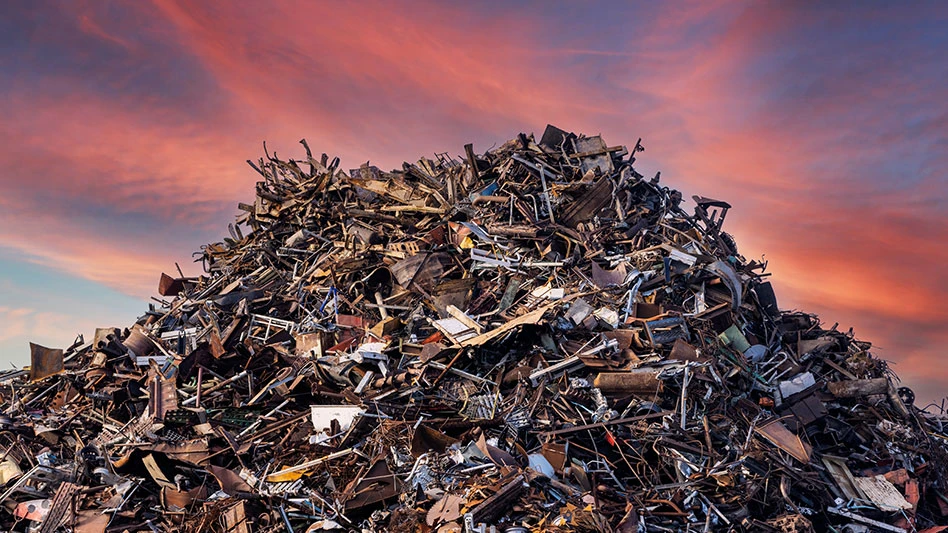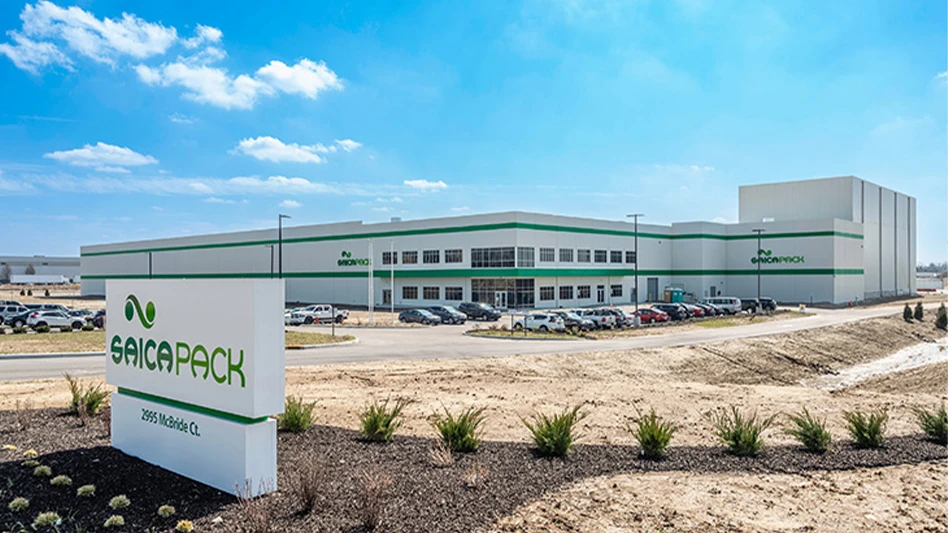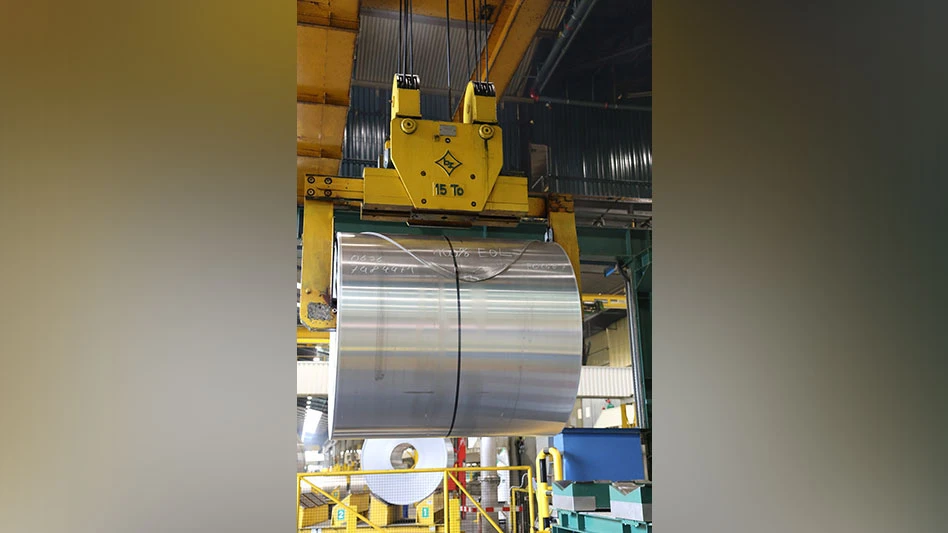As the member countries of the European Union prepare to implement the WEEE and RoHS Directives, electronics manufacturers and recyclers in the U.S. will feel the effects.
The European Union’s current 15 member states have until Aug. 13 of this year to determine how they will implement the directives on Waste Electrical and Electronic Equipment (WEEE) and on the Restriction of the Use of Hazardous
Substances in Electrical and Electronic Equipment (RoHS), which became effective Feb. 13, 2003.
U.S. electronics manufacturers, electronics recyclers and legislators will likely watch the WEEE implementation process closely. The directive will spur further discussion of electronic scrap management in the U.S., offering a legislative model governing the disposal of electronic waste.
The WEEE and RoHS Directives, however, will tangibly impact electronics manufactures that sell products in the EU as they implement design changes, address funding and collection issues and prepare for reporting responsibilities. Eventually, the design changes set forth by the RoHS Directive will affect U.S. electronics recyclers as these products reach the end of their life spans. (Though some observers believe at that point, the U.S. might have a nationwide regulation of its own.) But the ramifications on U.S. consumers are still uncertain.
MANDATING CHANGE. The WEEE Directive covers 10 product categories—large household appliances, small household appliances, information and telecommunications equipment, consumer electronics, lighting, electronic tools, toys and sports equipment, medical devices, monitoring instruments and automatic dispensers—and establishes a financing mechanism based on extended producer responsibility to fund the recycling of these products. Producers can address financial responsibility for managing their end-of-life branded products individually or collectively.
The costs associated with the management of historical products, or those products that reach market prior to Aug. 13, 2005, will be shared by all the producers in operation at the time those costs are incurred. Producers can charge a fee to cover these costs for 10 years in the case of large household appliances and for eight years in all other categories. Each producer will bear individual responsibility for its products produced after Aug. 15, 2005, with no visible fee to fund waste management permitted.
The first performance deadline will be Dec. 31, 2006. At this time, member states will need to have collected about four kilograms, or nearly nine pounds, of end-of-life electrical or electronic equipment per capita annually.
The RoHS Directive regulates the use of toxic materials in electrical and electronic equipment and calls for the elimination of lead, mercury, cadmium, hexavalent chromium and two brominated flame retardants by July 1, 2006. RoHS exempts the leaded glass in CRTs, some lead solder uses and some uses of mercury in fluorescent bulbs.
INFLUENCING DESIGN. "The RoHS directive will probably set the international standard for most electronics companies, whether they are Japanese, American or European," Heather Bowman, director of environmental affairs for the Electronics Industries Alliance, Arlington, Va., says. Global marketing of electronics makes it highly unlikely that electronics manufacturers based outside the EU will establish a second product line strictly for the EU, she says.
The EIA describes itself as a partnership of electronic and high-tech associations and companies that promotes the market development and competitiveness of the U.S. high-tech industry through domestic and international policy efforts.
"Global companies such as Dell are faced with a decision of whether to provide products designed for specific markets or, as Dell has chosen, to incorporate these changes into product offerings globally," Pat Nathan, sustainable business director, Dell Inc., Round Rock, Texas, says.
"WEEE has hastened the necessity to design for recycling. I think that there is going to be a tendency in a lot of areas for OEMs to try to harmonize designs across their global marketplace," Robert Houghton, president of Redemtech, Columbus, Ohio, says.
Redemtech is a corporate asset recovery and recycling firm with joint ventures in the U.K., Europe and Canada.
The Silicon Valley Toxics Coalition, an environmental group, through its Computer Take-Back Campaign, has tracked design trends in the computer industry with its annual computer report card. "What we’ve been able to determine is that there are a couple of important trends going on," Ted Smith, executive director of the San Jose-based coalition, says. "One is that the mere fact of requiring take back, which is requiring companies to internalize the cost of end-of-life treatment, has been sending pretty important economic signals to the designers to make it easier to recycle." This is happening through material selection changes and through modifications to facilitate disassembly, he says.
"I think we are going to see more and more design issues that are focused not just on the materials, but also on the ease of disassembly to remove the toxic materials," Smith adds.
"Certainly, the combination of WEEE and RoHS together has led to significant changes in the use of materials," Smith says. "You see that particularly with the brominated flame retardants and with lead." He says some companies have almost entirely phased out the use of brominated flame retardants in all of their products and that the industry has also made significant progress in phasing out lead.
"Lead is the biggest challenge for all of us . . . designing the lead out of the product by finding other means of soldering the parts," Nathan says. "I think the whole industry is challenged in that there is no widely accepted, proven alternative technology. While it’s challenging, we’re confident that we can find alternatives."
Houghton also says he thinks electronics manufacturers will begin to use modular designs that make disassembly and the separation of the various recycling streams easier. "Just standardizing plastics and labeling plastics would be a big move in the right direction," he says.
Bowman says material standardization will occur throughout the electronics industry as a result of RoHS. EIA is doing its part to aid this standardization through its development of a materials declaration guide. The organization recently completed a harmonization process with European and Japanese trade associations for electronics manufacturers, establishing what Bowman refers to as a "global standard" for declaring the content of electronic products. "It’s really a consistent way to tell recyclers what is in the product, whether it is a component or the final product," she says.
"I think we have developed a good dialogue with the OEM community in the U.S. through the Electronics Recycling Summit and through the cooperation of the Electronics Industry Alliance and its affiliated members to be able to understand the new materials," Peter Muscanelli says. Muscanelli is president of the International Association of Electronics Recyclers, Albany, N.Y. The IAER represents the international electronics recycling industry as it seeks to develop an effective and efficient infrastructure for managing end-of-life electronics.
"This is a large industry and changes come in pieces," Muscanelli continues. "The more pieces we can put together, the better we are going to be."
"As companies embrace these changes, the materials available to recycle will contain less environmentally sensitive elements, and, hence, their value for reuse will be enhanced," Nathan says. "This will be an evolution, however, as it takes a number of years for products to enter the recycling stream."
Recyclers can expect a number of benefits once electronics incorporating these design changes reach their facilities at end of life. After all, that’s the whole point of the directives, as Lauren Roman of West Chicago, Ill.-based electronics recycler United Recycling Industries points out.
IMPACTING RECYCLING. Reducing toxic materials used in electronics and facilitating disassembly will make the operational side of the electronics recycling industry easier and less expensive for recyclers, Houghton says.
"To the extent that folks are struggling today with low commodity costs and high operational costs, I’d expect that more recycler friendly designs will help leverage operational costs down for the recyclers and make it easier to be profitable in this part of the business," he says.
Even electronics recyclers who shred incoming streams find ease of disassembly pertinent when it comes to accessing components that contain mercury. Smith cites a Hewlett-Packard effort to make the mercury filament in its LCD backlighting more accessible and easier to remove. The company reduced the time it takes to perform this task from five or six minutes to a matter of seconds, he says.
Facilitating access to the fluorescent tube that illuminates the screen of laptop computers would also help electronics recyclers, Roman says. "If they are going to recycle these things in Europe, whether they are shredded or demanufactured, it would behoove them to make the top of the laptop case easier to unsnap so that you can get at the tube without breaking it."
Roman also sees room for improvement as far as disposable electronics are concerned, citing electronic toothbrushes as an example. The batteries need to be removed prior to shredding; however, it is very difficult to access the battery in an electric toothbrush, she say. Making that battery more accessible would be a great help to recyclers.
Houghton notes another possible effect: It may be easier for small electronics recyclers to remain viable.
"One of the things that you see happening right now is a general trend toward consolidation in the industry in favor, of course, of larger, more capital-intensive operations," Houghton says. "That is due in part to the difficulty in efficiently, cost effectively processing electronics in the state that we find them today. If they become easier and less capital intensive to process, then that will certainly help the smaller operators work profitably," he says. "It may slow consolidation."
Muscanelli says he believes that improved cooperation between electronics manufacturers and recyclers will ultimately benefit the recyclers. "The recyclers will understand what commodities they are dealing with and whether they will be able to recycle them through the system and get them back into the life cycle."
Muscanelli says it is important for the electronics recycling industry to get a better handle on the commodities that compose the electronics-recycling stream and that the IAER plans to delve into the area in the coming year. The IAER hopes to learn more about the variety of commodities electronics recyclers are producing and to get an accurate picture of where these materials are going, he says.
While it’s fairly clear that U.S. electronics recyclers will benefit from the WEEE and RoHS Directives, the impact on U.S. electronics consumers is debatable.
CONSUMER RAMIFICATIONS. Nathan says Dell does not believe U.S. consumers will see prices for Dell products increase in light of the WEEE Directive. "Accounting for services, expenses, etc. will continue to be done at the regional level," she says. "Expenses and revenues associated with European recycling will continue to be reflected in that region’s balance sheet."
That is not to say that Dell and its European consumers won’t see a financial effect resulting from WEEE. "Certainly, the way that the legislation is written, there will be cost impacts of WEEE. That is the whole purpose of WEEE—to get an infrastructure set up so that the costs are identified and distributed among the various players," Nathan says.
"The manufacturers may have to be more efficient because they now have to pay for this product at a mandated rate and they are going to have to look at trimming their costs because it is a competitive market," Muscanelli says.
"Possibly, because of the WEEE Directive, prices will increase because companies are going to have to internalize the cost of recycling," Bowman says. "But that is really going to be passed on to the consumers through higher prices."
Bowman expects that the RoHS Directive restricting lead solder will increase costs for electronic manufacturers. "Lead is an inexpensive, highly effective solder. As companies transition to tin/silver and other alternatives that are more expensive, that could increase the cost of what we see on the market," she says.
Smith thinks that thanks to Moore’s Law, the principle set forth by Intel founder Gordon Moore, which states that the price trend for all electronics is on a declining slope, WEEE’s effect on consumer pricing will be negligible. Smith says that the internalization of infrastructure costs by the OEMs will not turn this principle on its ear, but it may slightly slow the decrease in price. Smith also says that if the OEMs have to fund electronics recycling, it will provide them with the incentive they need to design for easier, more cost-effective recycling at the end of life. "The more incentives they have, the better off we are all going to be," he adds.
The author is associate editor of Recycling Today and can be contacted via e-mail at dtoto@RecyclingToday.com.

Explore the February 2004 Issue
Check out more from this issue and find your next story to read.
Latest from Recycling Today
- Steel Dynamics cites favorable conditions in Q1
- Hydro starts up construction in Spain
- Green Cubes unveils forklift battery line
- Rebar association points to trade turmoil
- LumiCup offers single-use plastic alternative
- European project yields recycled-content ABS
- ICM to host colocated events in Shanghai
- Astera runs into NIMBY concerns in Colorado





